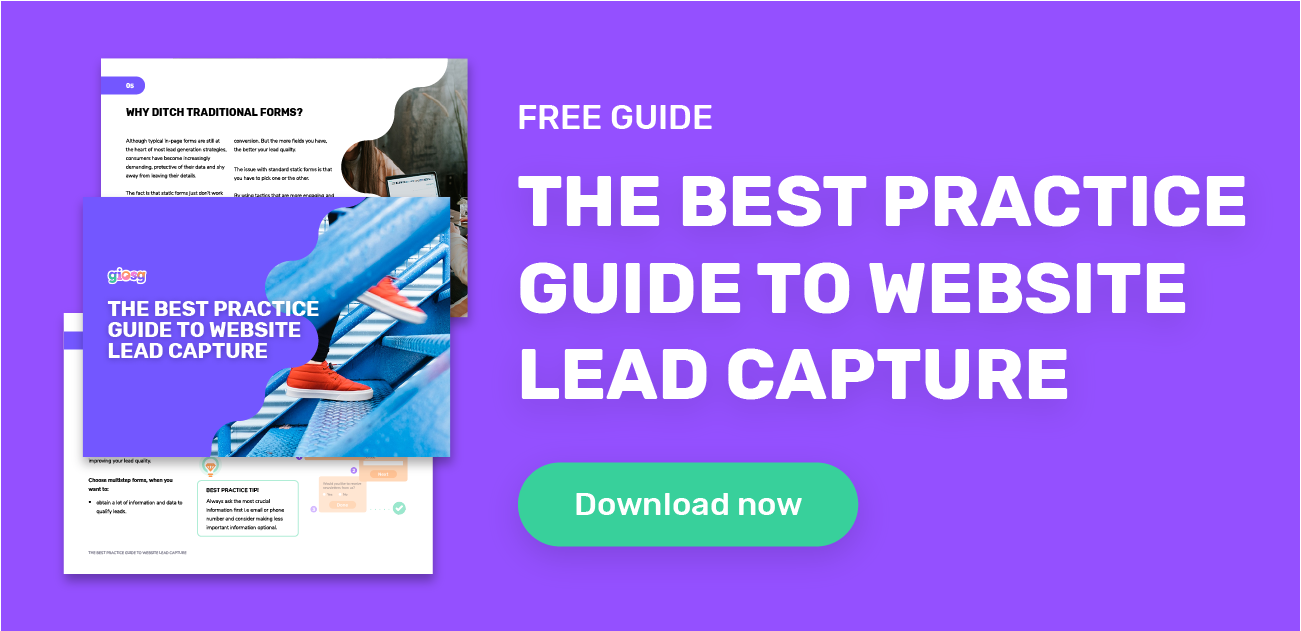Marketers work hard to drive traffic to their website, from SEO to PPC ads and social media campaigns. But the real challenge begins after visitors land on your website when it’s time to capture and convert.
Converting hard-earned traffic is not only one of the biggest challenges marketers face but a top priority.
67% of businesses use lead generation as the sole metric to determine content success.
A crucial part of building an efficient lead generation process is capturing your leads. This vital step focuses on collecting that all-important contact information and data of your prospective buyers.
In this lead capture guide, we uncover the best practices and tactics for effectively converting and capturing leads on your website.
What's in store?
What is lead capture?
Why ditch traditional lead capture forms?
Types of high-converting lead capture tactics
How to optimize lead capture
How to get started
What is lead capture?
Lead capture is the action that happens on your website when your visitors convert into leads. Typically this happens using lead capture forms, lead capture pages, and in e-Commerce on checkout pages.
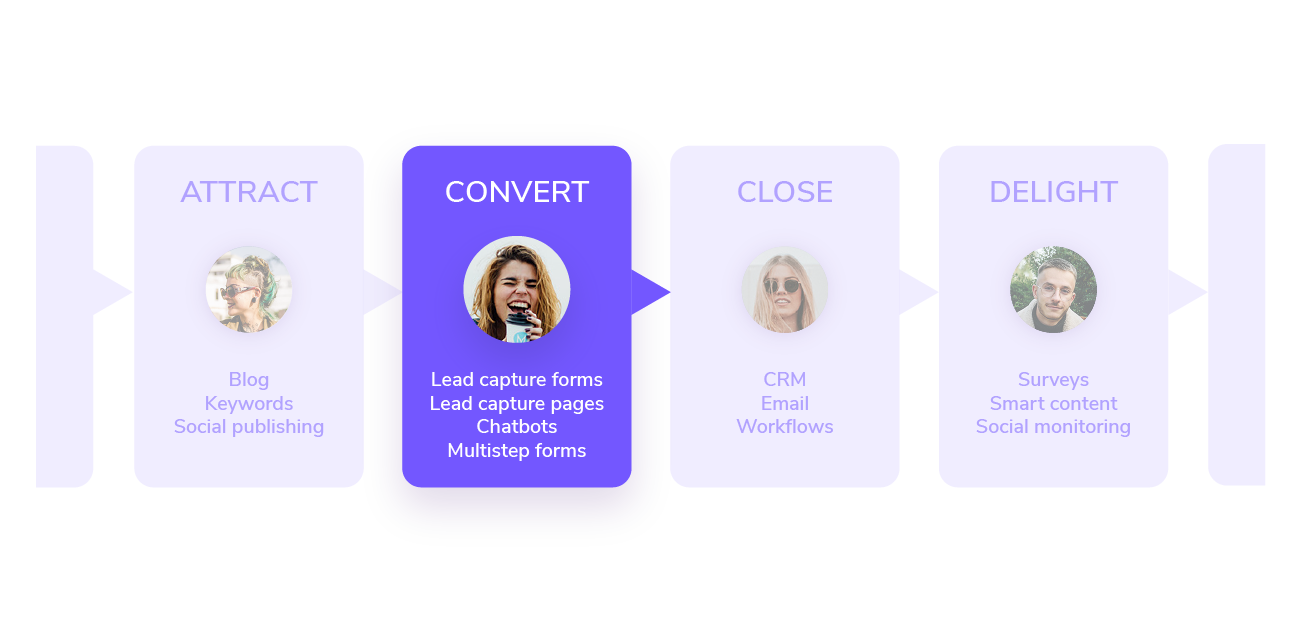
A lead capture form is a tool used to collect customer data. The main purpose of lead capture forms is to collect contact information by giving customers something in exchange for their data - be it a guide, discount code, or a product demo.
Lead capture pages are dedicated landing pages used for specific marketing campaigns.
The focus of lead capture pages is to provide information and entice visitors to leave their data. This information is often collected through lead capture forms.
Why ditch traditional lead capture forms?
Although the typical in-page forms are still at the heart of most lead generation strategies, consumers have become increasingly demanding, protective of their data, and shying away from leaving their details.
The fact is that static forms just don’t work as well as they used to. Long forms can hardly be called the best lead generation tools, as they no longer provide enough value for visitors.
Forms with multiple fields can reduce the conversion rate.
Marketers often face a catch-22 situation, the fewer fields you use, the better the conversion. But the more fields you have, the better your lead quality.
The issue with standard static forms is that you have to pick one or the other.
By using tactics that are more engaging and interactive like multistep forms or lead generation chatbots you can collect more data in a user-friendly way while increasing the quality of your lead capture. This applies to both B2C and B2B lead generation.
Types of high-converting lead generation tactics:
In this section, we deep dive into two different types of lead capture tactics for increased conversion rates and improved customer engagement.
1) Multistep forms for lead capture
Multistep forms are exactly what they sound like - long forms broken into multiple views. It’s a simple way to help fight form fatigue and make forms with multiple fields less overwhelming to visitors.
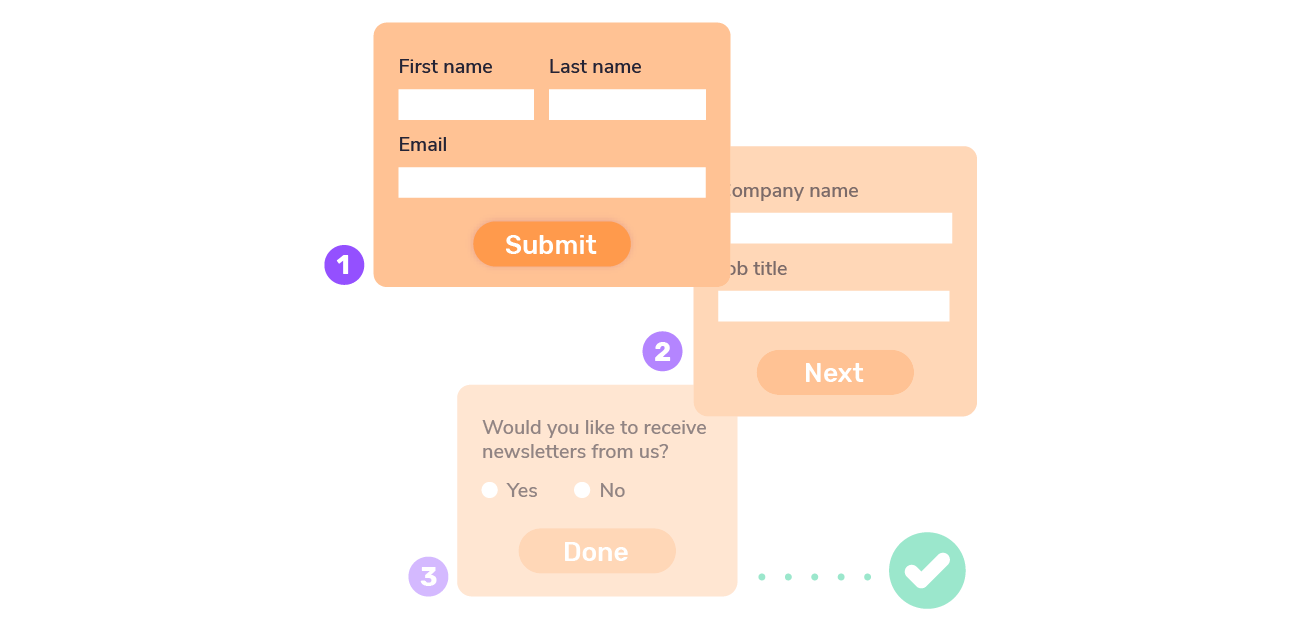
Multi-step forms have 300% more conversion.
Obviously, this doesn't mean that sky's the limit - it's still important to be concise and keep form fields to a minimum. But in situations when it’s absolutely vital to have many fields, multi-step forms are a great choice.
Take shipping forms or event registration for example - you wouldn't want to send your products to the wrong address. Using multi-step forms allows you to collect more information without overloading your forms.
When to use multistep forms?
Spreading information across multiple views can create a more positive customer experience and increase conversions while improving your lead quality.
Choose multi-step forms, when you want to:
- Obtain a lot of information and data to qualify leads.
- Qualify leads without intimidating website visitors and without reducing your conversion rate.
- Only convert visitors who are truly interested in your offer.
BEST PRACTICE TIP! Always ask for the most crucial information first i.e email or phone number. Consider making less important information optional.
Read more about optimising your multi-step forms and designing lead capture forms for accessibility in this post.
2) Chatbots for capturing more leads
Lead generation chatbots provide a new avenue for capturing leads on your website. Although often thought of as a customer service channel, chatbots are excellent tools for marketing and sales.
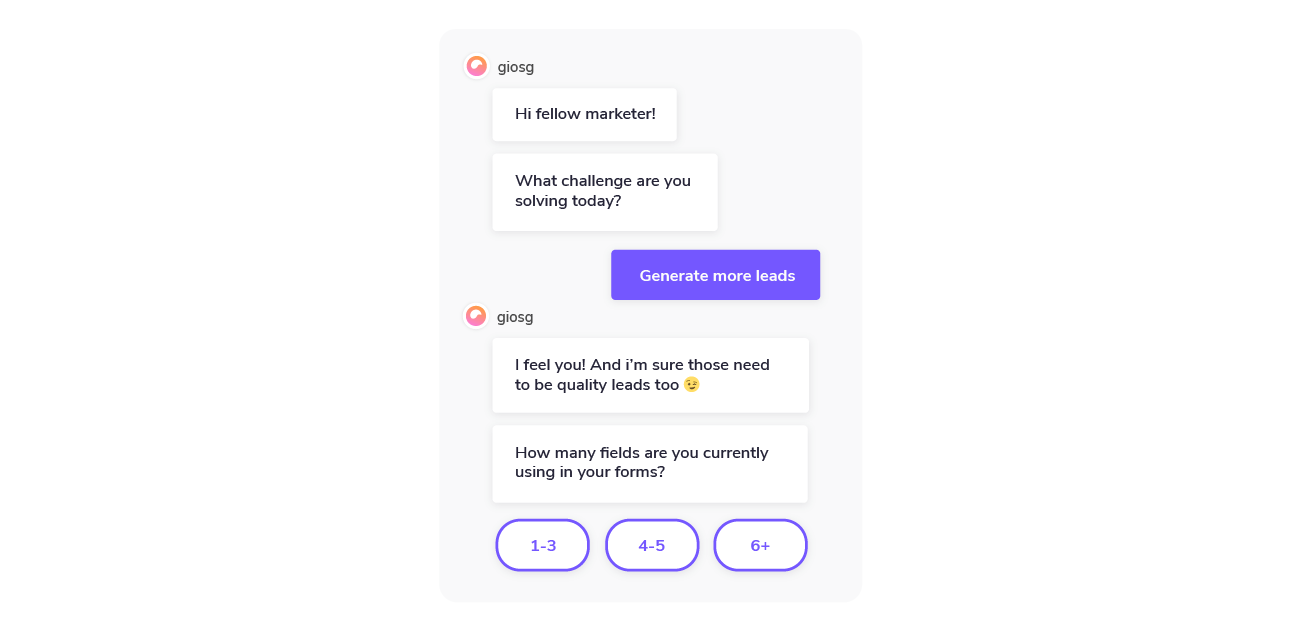
The benefit of using chatbots for lead capture:
- Improved customer experience
- Capture leads 24/7
- Lead qualification
- Increased engagement and interaction
Qualify your leads with chatbots
Much like multi-step forms, chatbots can improve the quality of your lead capture. Chatbots can help you get more information on leads before you send them to your sales team.
The reason lead generation chatbots are more effective than static forms is that the lead capture and qualification approach is conversational and less pushy!
Learn how to increase lead quality using chat and chatbots in our on-demand webinar.
Combine your chatbot with live chat
Lead generation chatbots can be combined with live chat. Using a chatbot as the initial interaction, you can qualify the online prospect before the transfer to a real chat agent.
This means your sales team spends less time chatting to irrelevant leads and more time on qualified sales leads.
Currently, there are some solutions out there that allow you to easily create chatbots for lead capture. Take giosg, for example, it’s a versatile tool that makes creating multi-step forms and lead generation chatbots easy.
Our drag and drop solution requires no coding and can be implemented immediately - a dream come true for any digital marketer!
3. Use interactive product demos for capturing leads
For products like software, consider adding an interactive walkthrough of your product, which ends with a lead form. Why do this? Because buyers just want to see the product, before deciding whether or not they'll talk to sales agents (or sign up).
Using interactive product demo software, you can create a step-by-step tour which shows off your UI and key selling points in a much more engaging way than just with screenshots.
Alternatively, you can add QR codes with targeted CTA using a QR code generator software. Adding QR codes to your product demo lets you land your leads on the targeted page without much hassle.
You can expect website conversion rates to increase since it's much more enticing to engage with an interactive demo vs. a plain form. Using these also removes low-quality leads who are just curious to see the product.
Anyone who still books a demo or signs up after going through the tour will be highly engaged and more likely qualified.
How to optimize your lead capture?
There are many ways you can improve your lead capture strategies. We've listed our top three ways you can optimize your existing lead generation tools, whether it's lead generation forms or your marketing chatbot.
Use gamification generating leads
Buzzword or not, gamification is an effective way to optimise your lead capture forms, by increasing engagement and conversions. If you're new to it, gamification is all about placing game-like features, mechanics, or user interfaces onto your website.
There are many ways to gamify your website, but it works exceptionally well for improving your lead capture forms.
Gamification can help marketers to create interactive experiences that make your brand stand out from competitors. Create a meaningful experience and offer value by using gamification throughout the customer journey to:
- Capture new leads and collect contact information
- Get more data on existing leads and bulk up your CRM
- Build loyalty and foster better customer relationships
How does gamification in lead capture work?
Gamification creates a “Flow” state-of-mind, which is the feeling of timelessness and happens when an experience is so enjoyable that the person is completely immersed in what they are doing.
Building this kind of experience for your website visitors is the ultimate goal, isn’t it?
Using interactive game-like incentives such as points, badges, and rewards, marketers provide more value and increase a visitor's motivation to provide their data.

Why not try optimizing your lead capture by:
- Creating a quizzes: Quizzes work as data collection points to segment your customer base for personalization. Leverage the power of gamification with a fun quiz that activates customers allowing you to entertain visitors while capturing leads.
- Gamifying your seasonal campaigns: Take advantage of different holidays to gamify your website lead capture. Try creating an advent calendar for your holiday campaign that motivates visitors to leave their information in exchange for a promotion, new product, or discount.
- Creating fun questionnaires: Why not create game-like questionnaires to get a better understanding of your existing customers, get more information on your customers and bulk up your CRM.
- Using gamification in your ad lead capture forms: Gamify your ads by creating quizzes, polls, or games and connecting them to 3rd party websites as rich media ads. Connect with your target audience where they are and start capturing leads outside of your own website!
Target your lead capture tactics
Onsite behavioural marketing is also known as onsite re-marketing and is a data-driven strategy to personalize, engage and capture leads on your website.
It’s not enough to just have different lead capture tactics in place, targeting your visitors at the right time is the key for increased conversions. Targeting is all about personalizing your approach.
80% of consumers are more likely to do business with a company that offers personalized experiences.
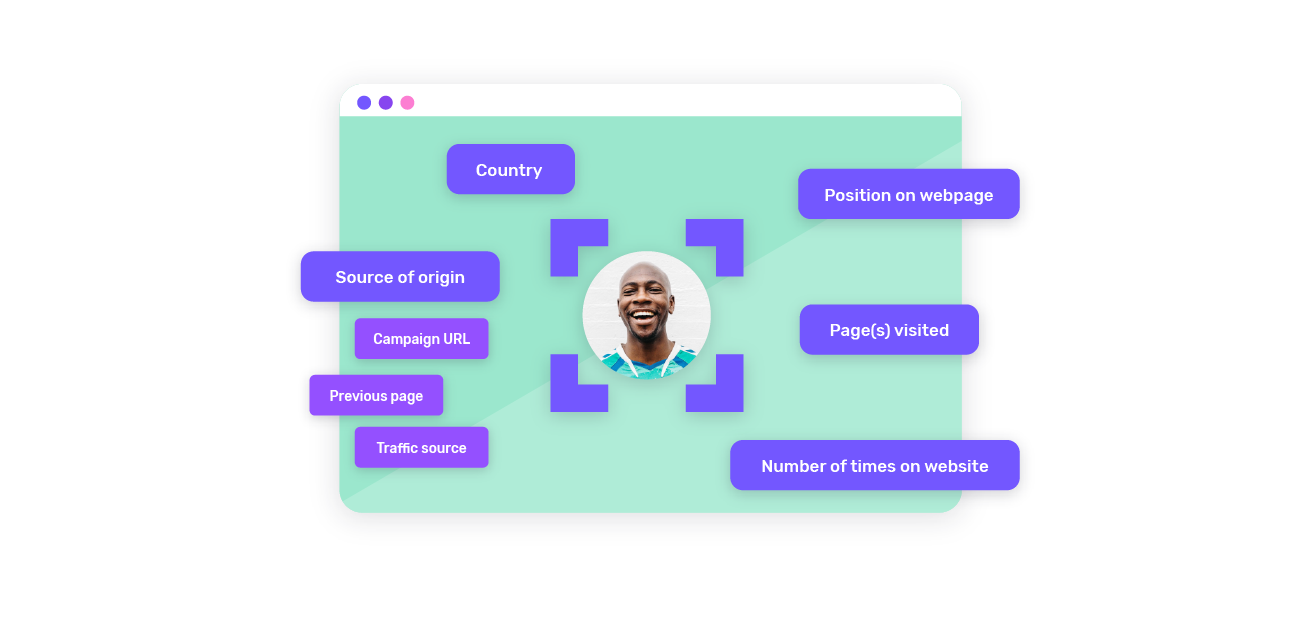
By tracking your visitor behaviour and using that data to segment your customers, you can perform successful onsite targeting. And if you fail to target your visitors at the right time, it could cost you.
78% of customers reported leaving a company’s website and purchasing from a competitor due to a poorly personalized experience.
Whether it’s multi-step forms, quizzes or chatbot ensure that each visitor gets a unique experience that is relevant to them.
Try targeting your lead capture tactics according to:
- What page your visitor is on
- Where your visitors are on your page
- Where they came from previous page, campaign URL, traffic source
- Which country they are from
- The number of times they have been on your website
Use A/B Testing to optimize lead conversions
A/B testing, also known as split testing, involves displaying two different variations of your content to your online visitors.
The performance of both versions is measured, then evaluated, and used to optimize your final content. The aim is to determine, which variation performs better for the given conversion goal.
Experiments are most effective when testing one specific variable at a time, such as CTAs or form fields. This makes it possible to draw conclusions.
When optimizing your lead capture methods, you can AB test specific form elements or even different types of lead capture methods.
A/B testing is the number one preferred method for conversion optimization by digital marketers.
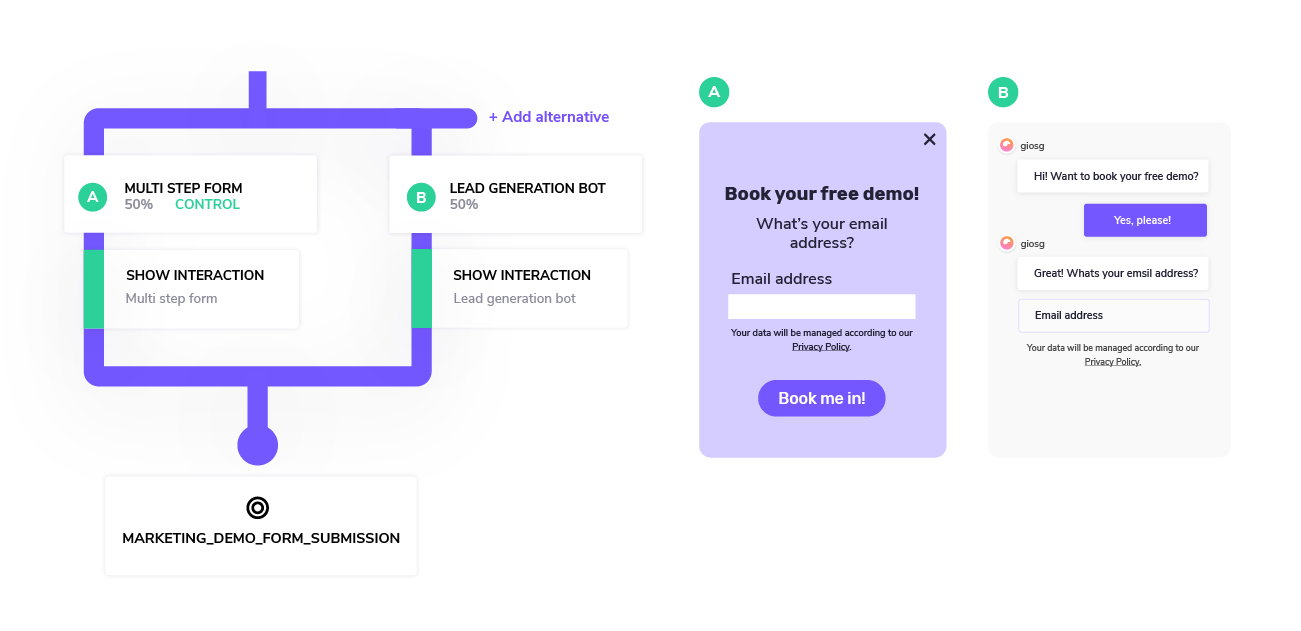
What to A/B test?
A/B testing is the most popular optimization method amongst marketers, but currently, not a lot of tools offer AB testing for chatbots or other interactive lead capture methods.
Giosg has a built-in AB testing feature that makes it easy to test any element of your lead capture interactions.
Here are some ideas of what you could test:
- Multi-step form vs. a lead generation chatbot
- Automated messages of lead generation chatbots
- The number of mandatory form fields
- Calls-To-Action
- Targeting: Find out which page is your highest converting page.
How to get started with Interactive Lead Generation
There are many things marketers can do to optimize website conversions. But lead capture forms are one of the simplest and most effective elements that provide quick and high returns.
Switching your static forms with interactive lead capture tactics, will not only provide a better customer experience and increase engagement, but significantly boost your conversion rate.
